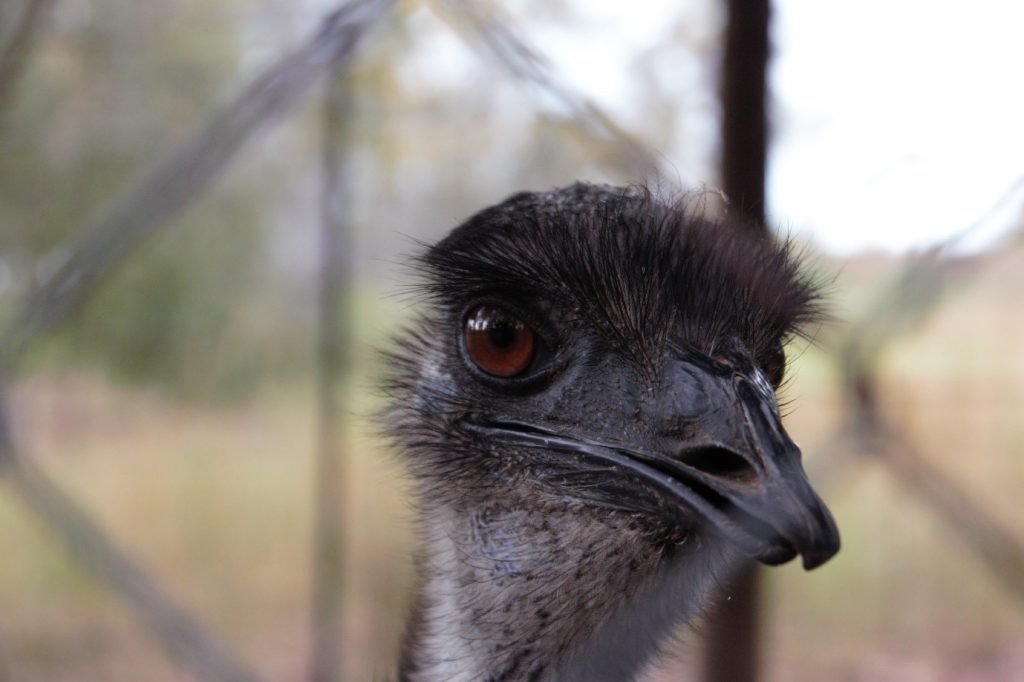Emus aren’t the smartest of birds. Their tiny head atop a big body gives you a clue to the size of their brainpower. I once visited an emu farmer and noticed that the emus crowded themselves in one corner of the field, right up against the fence. At the same time his llamas enjoyed the freedom of a hundred grassy, delicious hectares, undisturbed by the noisy crowd at the fence.
We’re often asked by non-profits where they can find the right corporate partners. We recommend they start by understanding their own organisation- its needs, core business, assets and value proposition. That way they gain clarity on which types of businesses are best aligned. In response they usually download the top 100 listed companies and start at the top. Of course, those corporates all have massive profits, but it’s a very crowded and competitive space. If you’re just starting out in partnerships, they may be too big for you or not a great fit. Like the emus at the fence, you’re stuck in a corner while missing the bigger opportunity further afield.
Small to medium sized enterprises (SMEs) are often an untapped sector, overlooked in favour of their bigger, glossier competitors. But 98% of businesses in Australia are SMEs, with 2.4 million companies generating $700bln for the economy.
Your best corporate partner could be an SME and here’s why.
Access to decision makers
Large companies are big bureaucracies and there are many layers of approval to navigate before you get a decision. Frustratingly, your key contact can move on or be restructured while you’re building the relationships and then you have to start all over again. With SMEs you can usually get straight to the decision maker, especially if they’re the founder. They’re also less likely to skip to another job in 12 months. When we worked with Carman’s, the maker of muesli and healthy snacks, their head office staff comprised no more than 20 people. Carolyn Cresswell was intimately involved in decisions about community partners. Carman’s recently announced their new partnership with the Wheen Bee Foundation, to plant bee friendly trees on farms and encourage sustainability in food production. Wheen Bee foundation is a small, grassroots organisation based in country Victoria and it’s the perfect alignment for them, in terms of branding and core mission.
Stronger community connections
SMEs often have a greater commitment to the local community in which they operate and seek genuine opportunities to build on those connections. If your non-profit is state-based or has local roots, you should consider partnerships with businesses who share your footprint. The Rescue Helicopter Service in northern NSW has built deep relationships with the businesses in its geographic area, including the mining, extractive and industrial companies that are concentrated in the area and the local Newcastle Knights rugby league team. There is a shared interest in success as local businesses benefit from the amazing services of the rescue helicopter crews.
Opportunity to innovate
Have you ever tried to get a big bureaucracy to be innovative? Yes, they may have the money to back it, but it’s like turning around an ocean liner. By contrast, their SME competitors are nimble, responsive and more likely to be open to innovate and create with you. When Ovarian Cancer Australia worked with Wynstan Blinds the company was open to new ways to make an impact, beyond their existing financial support. They helped to create a series of videos about the symptoms of ovarian cancer and told the stories of survivors to inspire women to take action.
We know that the top 100 companies have the biggest balance sheets, but they can also have tight wallets. If you’re looking for open space and untapped opportunities, think about SMEs. They’re the brands in your kitchen cupboard that are well know but slip under the radar. Look further afield to find fresh pastures and you won’t get stuck by the fence with the other emus.

